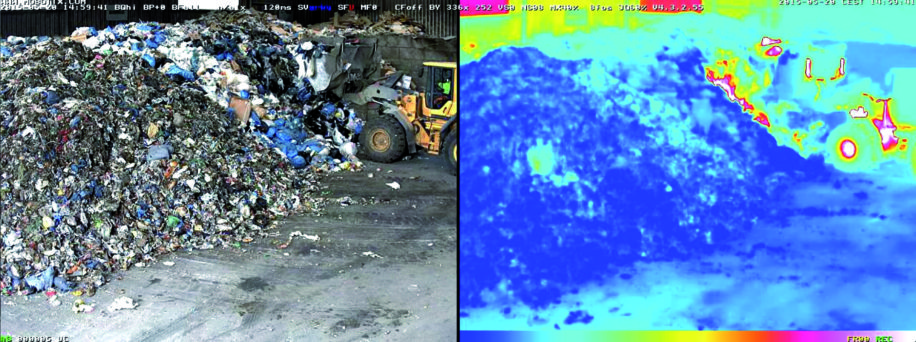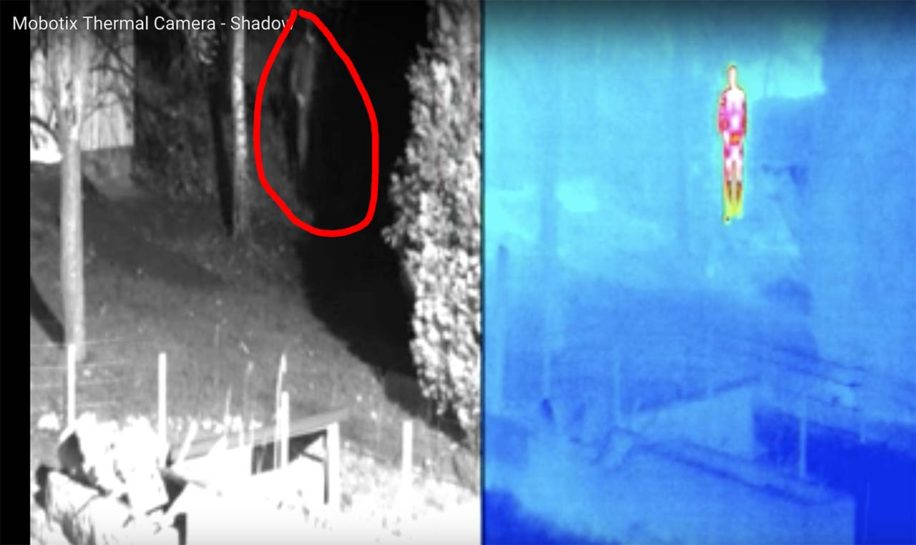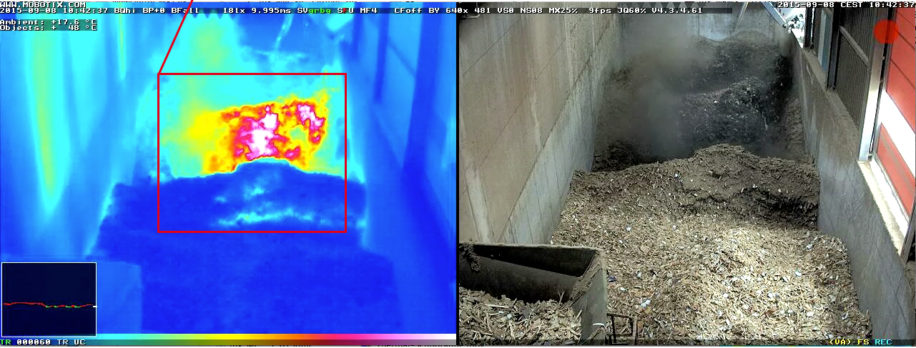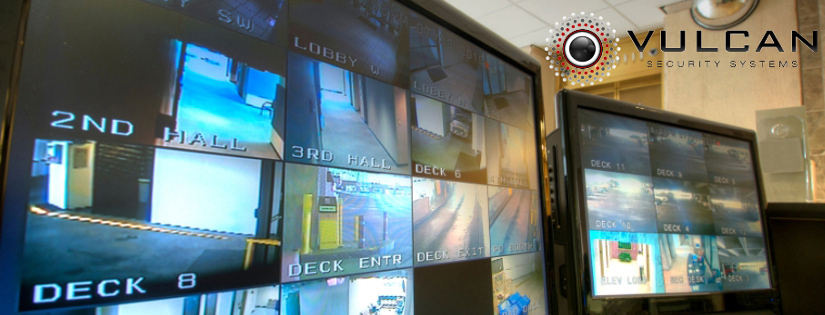In this post, we take a look at how thermal cameras are being used by recycling facilities, waste management operations, and other industrial settings with scrap yards where materials are piled for storage.
Fire and theft are two of the biggest potential sources of loss at recycling and scrap yards. Thermal cameras provided added capacity to mitigate risks and reduce loss due to both.
We’ll look at fire detection and prevention first.
Flash fires are a big risk and expense in many types of recycling facilities and waste management operations. Hot spots can quickly become smoldering fires, then burst into flames seemingly without warning.
Advance warnings ARE there—in the numerous “hot spots” that permeate stored materials. The key to mitigation is to detect the hot spot first, before the flames are visible.
Thermal Cameras Can Detect Hot Spots
Sensor-equipped thermal cameras are now being deployed as a first step to identify and mitigate hot spots before the flames appear.
The photo below shows images captured by a Mobotix thermal camera at a scrap yard for a recycling facility. The image on the right show the “hot spots” and the heat radiating from the front-end loader.

In August Security Today named the Mobotix S16B Thermal TR (thermal radiometry) camera as its “new product of the year” in the Video Surveillance Cameras — Thermal category for 2018.
Programmed, Auto-Response Based on Defined Conditions
Mobotix video security cameras are computers, built on the Linux operating system. These cameras do more than simply record visual and thermographic images. The operating system is inside the camera and the camera can be programmed to execute a response sequence defined by your business needs.
Once the hot spot is identified, the Mobotix camera can automatically trigger a response that you have defined. The response may be to alert your facilities manager or designated safety officer or to deploy the fire control system, such as automatically spraying flame retardant and notifying the appropriate authorities.
Mobotix thermal cameras can be configured to work with cannon systems to spray fire retardant through remote manual activation or automated activation based on predefined trigger conditions.
Mark Heintzman, Business Development Manager for Mobotix Americas.
Using Thermal Cameras to Prevent Theft of Materials at Scrap Yards & Recycling Facilities
Scrap yards are a favorite target of human thieves, who might find it relatively easy to stay hidden from traditional optical video security cameras. Since scrap material storage configurations are not static due to changing inventory levels, traditional optical video cameras may need to be repositioned to maintain ideal field-of-vision.
Large scrap yards may have perimeters that extend beyond the maximum visual range of most HD optical video cameras. There’s also the issue of lighting, or lack of lighting, in many areas of the facility.
Thermal cameras aren’t subject to these same limitations.
Thermal radiometry can quickly detect a would-be thief who has managed to scale a fence or otherwise break into a scrap yard. Mobotix thermal cameras can detect people at distances up to 400 meters.
Once the heat signature has been detected, the Mobotix camera can alert an on-site security guard or trigger an alert to remote security monitoring service for live-via-remote investigation by company security/management or third party monitoring personnel. Law enforcement can be dispatched, as necessary.
This image shows a Mobotix thermal camera detecting a human intruder (or possible human intruder) at a security fence around an industrial facility.

This Mobotix video shows the intense temperature levels in materials at a waste and recycling facility:
This is article #3 in Vulcan Security Systems’ series on Thermal Security Cameras.
In Article #2 we took a look at how the thermal sensors work in video security cameras.
Article #1 was an introduction to thermal cameras in video surveillance.
Vulcan Security Systems has several clients who use high-definition IP video security cameras to monitor their inventory materials recycling facilities.


